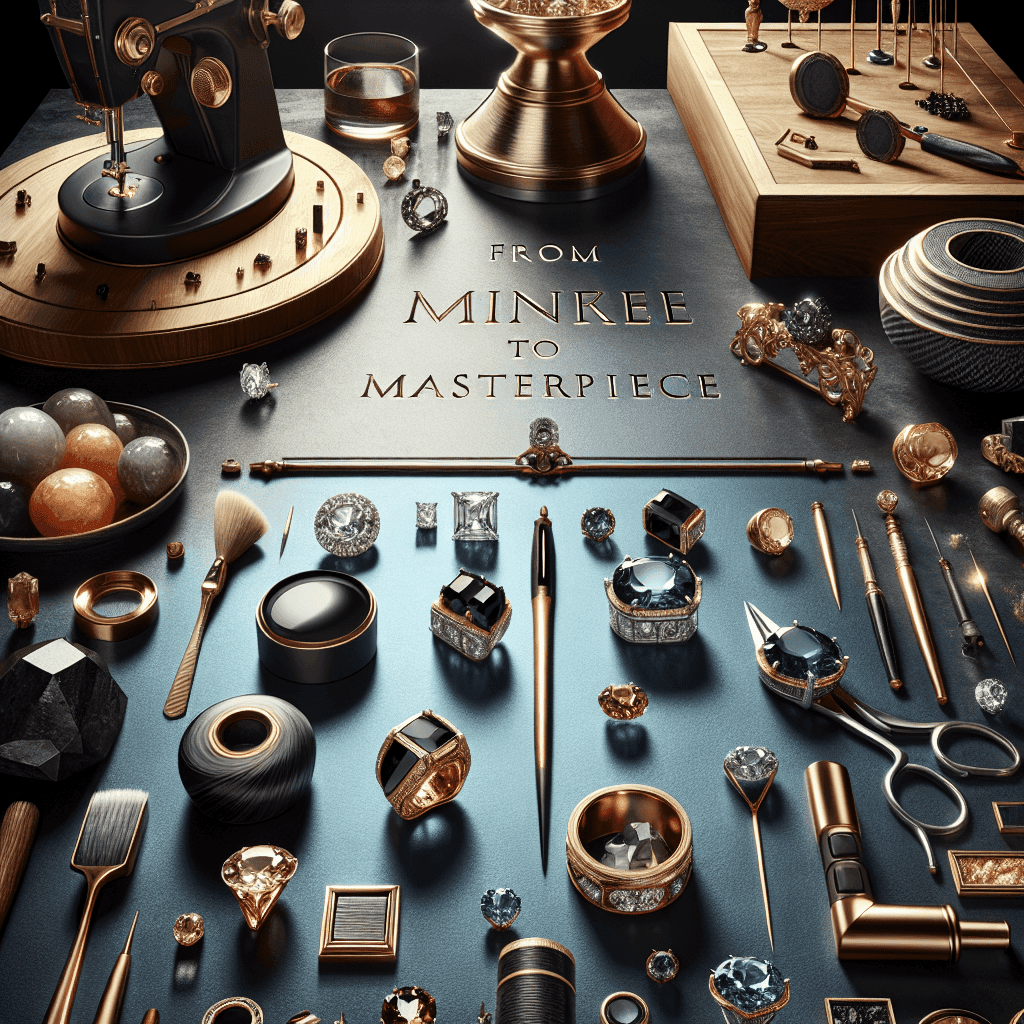From Mine to Masterpiece: How Fine Jewelry is Crafted
The allure of fine jewelry transcends mere aesthetic appeal, embodying a rich tapestry of history, artistry, and meticulous craftsmanship. Each piece tells a story, from its geological birth to its transformation into a dazzling adornment that captivates the imagination and adorns the body. This journey from mine to masterpiece is a fascinating blend of nature’s wonders and human ingenuity.
- The Discovery: Unearthing Gemstones
- Extraction Techniques and Ethical Considerations
- Gemstone Preparation: Cutting and Polishing
- Design Inspiration and Conceptualization
- The Crafting Process: From Sketch to Setting
- Final Touches and Quality Assurance
- Cultural Significance and Artistic Value
The Discovery: Unearthing Gemstones
The journey of a gemstone begins long before it reaches the jeweler’s bench, deep within the Earth’s crust. These treasures are formed through miraculous processes of mineralogy, often taking millions of years to develop their characteristic beauty. The discovery of gemstones is a combination of geology, luck, and relentless exploration. Sites like the diamond mines in South Africa or the sapphire sources in Madagascar are renowned for their rich deposits.
Extraction Techniques and Ethical Considerations
Extracting gemstones is an intricate process that requires precision and consideration to minimize environmental impact. Techniques vary from open-pit mining to river dredging and deep-sea operations, each with its own environmental and ethical implications. In recent years, the jewelry industry has seen a significant shift towards sustainable practices, with an emphasis on traceability and ethical sourcing. Organizations like the Responsible Jewellery Council promote these values through rigorous certification processes.
Gemstone Preparation: Cutting and Polishing
Once extracted, raw gemstones undergo a transformation through cutting and polishing, a process that reveals their hidden beauty. Master gem-cutters, or lapidaries, use their expertise to evaluate each stone, deciding how to cut it to maximize its color, brilliance, and size. This stage is both an art and a science, requiring a deep understanding of the gemstone’s crystal structure and optical properties.
Design Inspiration and Conceptualization
The design of fine jewelry is often inspired by a myriad of sources, from nature and history to art and personal stories. Designers work closely with gemologists and craftspeople to create a piece that enhances the natural beauty of the stones. This collaborative process involves detailed sketches and models, ensuring that the final product will be both beautiful and functional.
The Crafting Process: From Sketch to Setting
The actual creation of fine jewelry is a meticulous process that blends traditional techniques with modern technology. Artisans such as goldsmiths, setters, and engravers work together to bring the designer’s vision to life. Techniques like lost-wax casting, hand-forging, and pavé setting are employed to create a piece that is not only structurally sound but also a work of art.
Final Touches and Quality Assurance
Before a piece of jewelry is deemed complete, it undergoes a series of final touches that include additional polishing, cleaning, and detailed inspections. Quality assurance is paramount, as each piece must meet high standards of excellence. This stage ensures that the jewelry is not only aesthetically pleasing but also durable and comfortable to wear.
Cultural Significance and Artistic Value
Fine jewelry is often cherished not only for its material value but also for its cultural and artistic significance. Throughout history, jewelry has served as a symbol of status, power, and beauty across various cultures. Today, it remains a testament to human creativity and a form of personal expression that carries deep emotional and sentimental value.
The journey from mine to masterpiece is a compelling narrative of transformation, imbued with dedication, artistry, and a deep respect for the natural world. Each piece of fine jewelry stands as a symbol of the enduring quest for beauty and perfection, a legacy that continues to evolve with each generation of talented artisans.
For further exploration into the world of gemstones and jewelry craftsmanship, esteemed institutions like the Gemological Institute of America (GIA) offer extensive resources and educational materials. Visit GIA’s website to learn more about the fascinating world of gemology.



